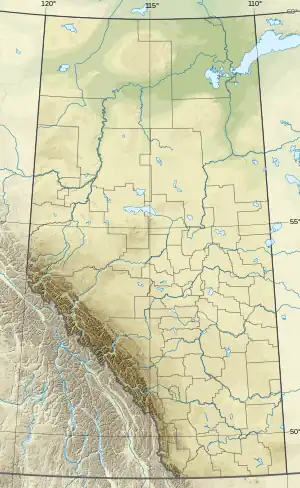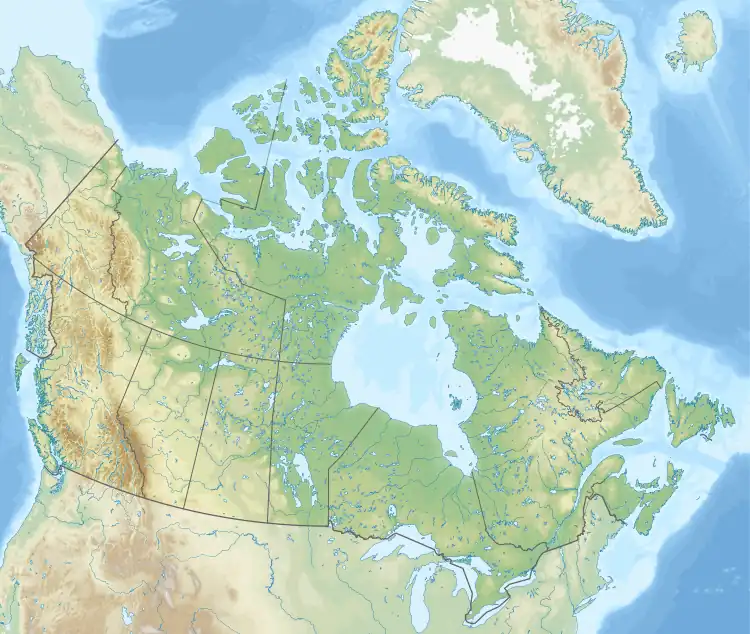Reno | |
|---|---|
 Reno Location of Reno  Reno Reno (Canada) | |
| Coordinates: 55°59′34″N 116°59′37″W / 55.99278°N 116.99361°W | |
| Country | Canada |
| Province | Alberta |
| Region | Northern Alberta |
| Census division | 17 |
| Municipal district | Northern Sunrise County |
| Government | |
| • Type | Unincorporated |
| • Governing body | Northern Sunrise County Council |
| Area (2021)[1] | |
| • Land | 0.28 km2 (0.11 sq mi) |
| Population (2021)[1] | |
| • Total | 20 |
| • Density | 72.1/km2 (187/sq mi) |
| Time zone | UTC−07:00 (MST) |
| • Summer (DST) | UTC−06:00 (MDT) |
| Area code(s) | 780, 587, 825 |
Reno is a hamlet in northern Alberta, Canada, within Northern Sunrise County.[2] It is located 8 kilometres (5.0 mi) east of Highway 2, approximately 146 kilometres (91 mi) northeast of Grande Prairie. It is probably named after Reno, Nevada.[3]
Demographics
In the 2021 Census of Population conducted by Statistics Canada, Reno had a population of 20 living in 6 of its 7 total private dwellings, a change of 0% from its 2016 population of 20. With a land area of 0.28 km2 (0.11 sq mi), it had a population density of 71.4/km2 (185.0/sq mi) in 2021.[1]
As a designated place in the 2016 Census of Population conducted by Statistics Canada, Reno had a population of 20 living in 7 of its 7 total private dwellings, a change of 300% from its 2011 population of 5. With a land area of 0.28 km2 (0.11 sq mi), it had a population density of 71.4/km2 (185.0/sq mi) in 2016.[4]
See also
References
- 1 2 3 "Population and dwelling counts: Canada and designated places". Statistics Canada. February 9, 2022. Retrieved February 10, 2022.
- ↑ "Specialized and Rural Municipalities and Their Communities" (PDF). Alberta Municipal Affairs. January 12, 2022. Retrieved January 21, 2022.
- ↑ Marden, Ernest G.; Marden, Austin (2010). Community Place Names of Alberta. Lulu.com. p. 239. ISBN 978-1897472170. Retrieved September 1, 2017.
- ↑ "Population and dwelling counts, for Canada, provinces and territories, and designated places, 2016 and 2011 censuses – 100% data (Alberta)". Statistics Canada. February 8, 2017. Retrieved February 13, 2017.